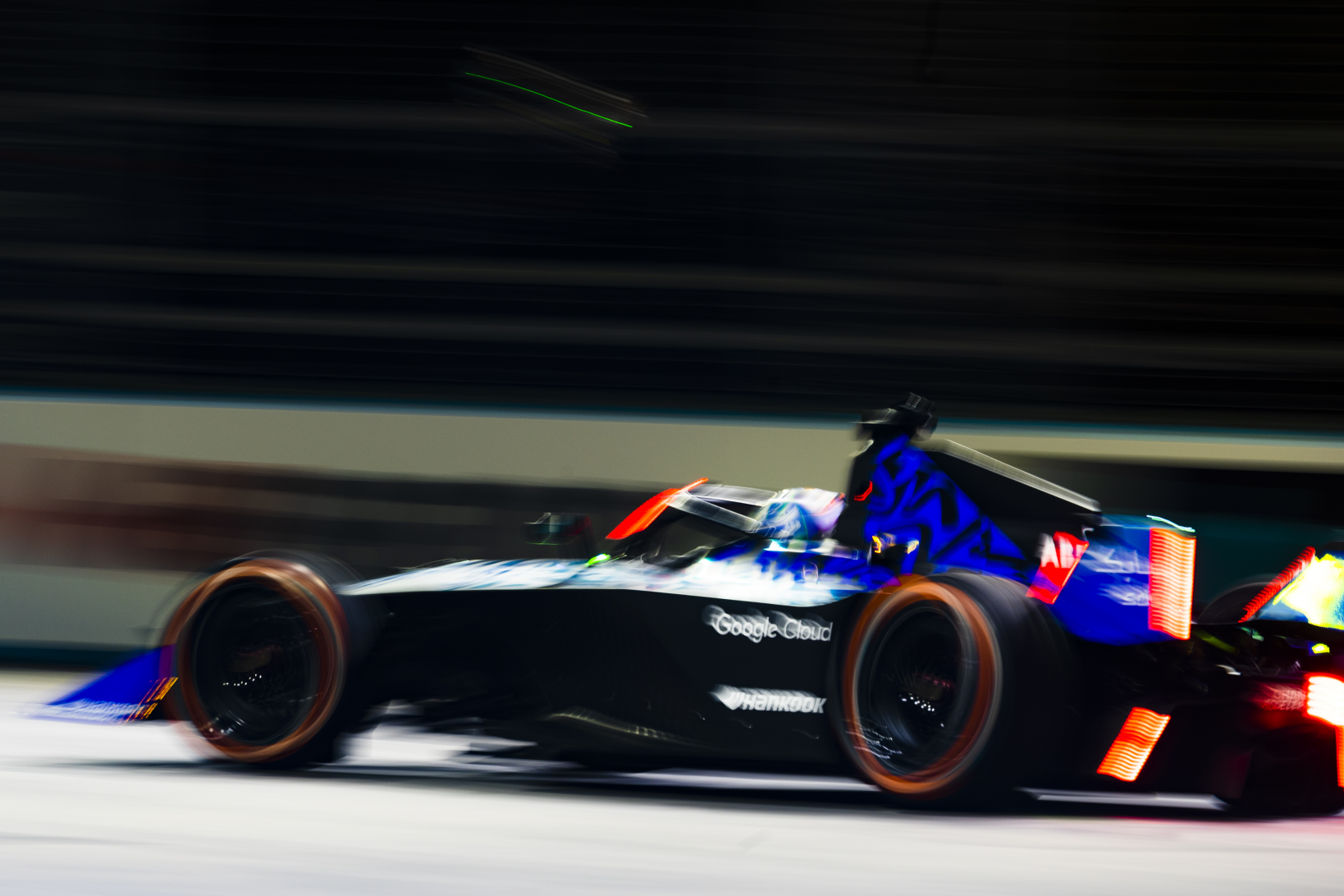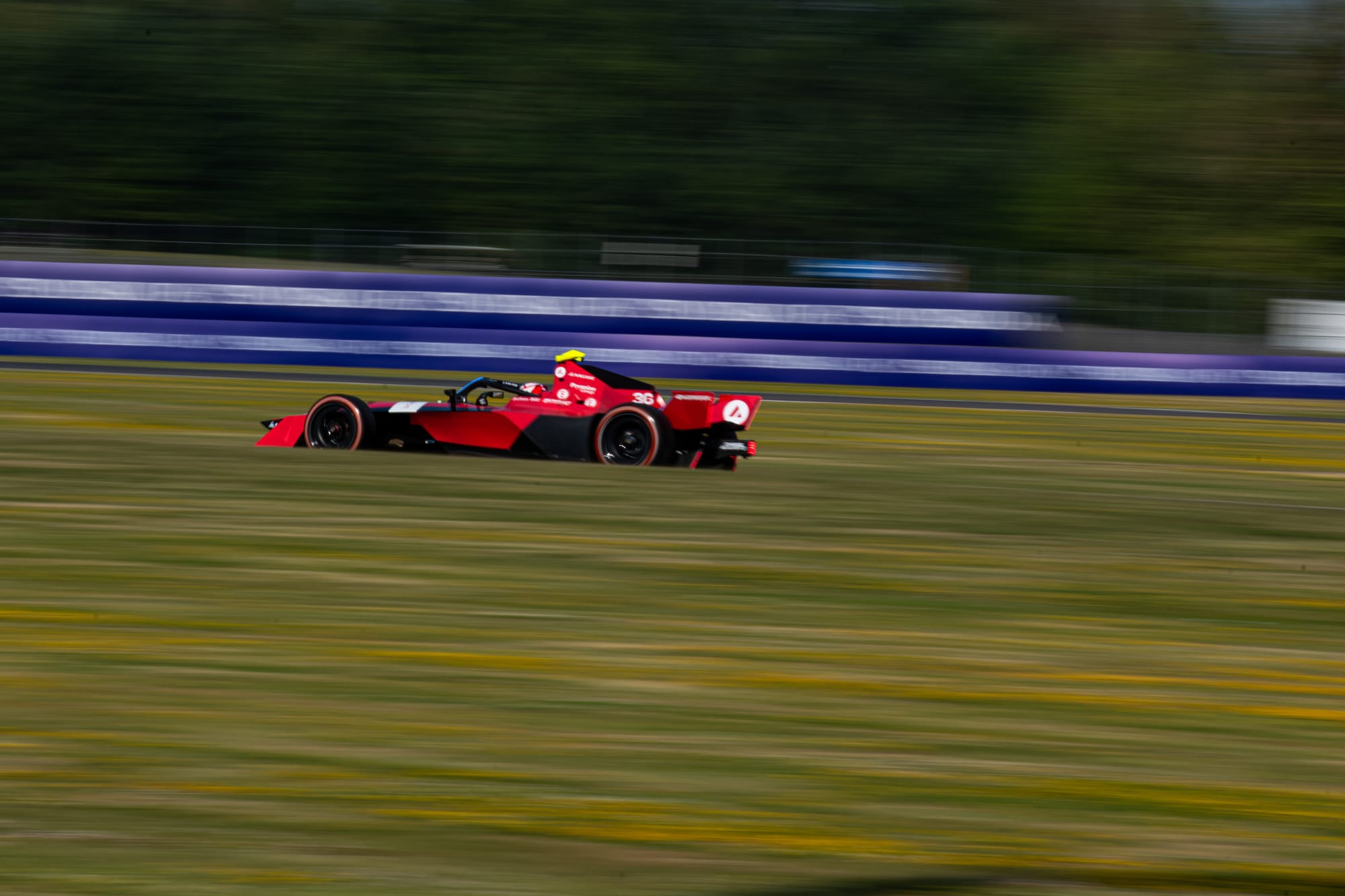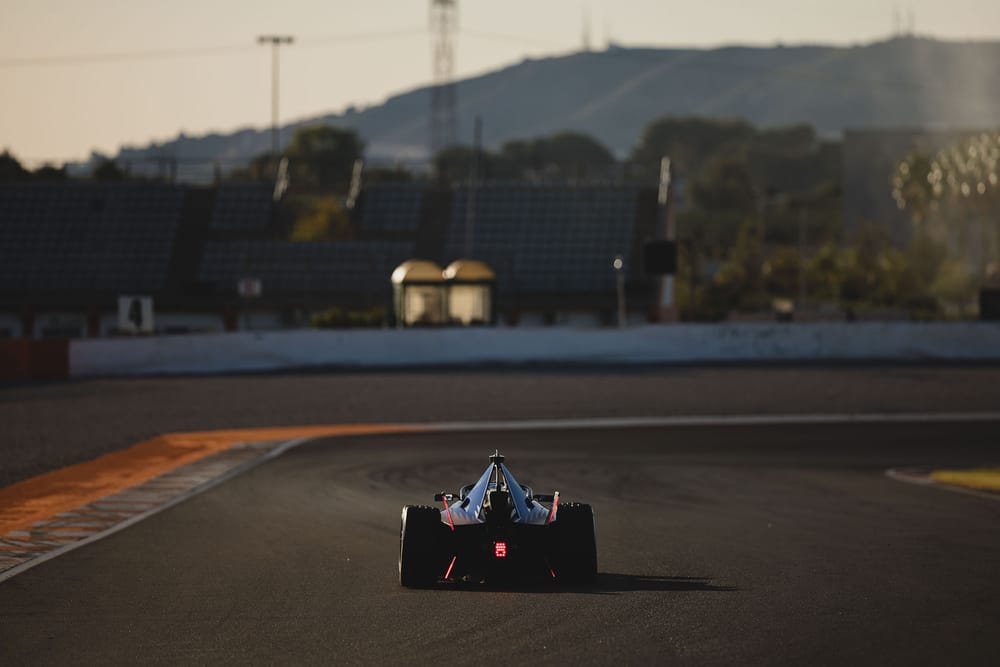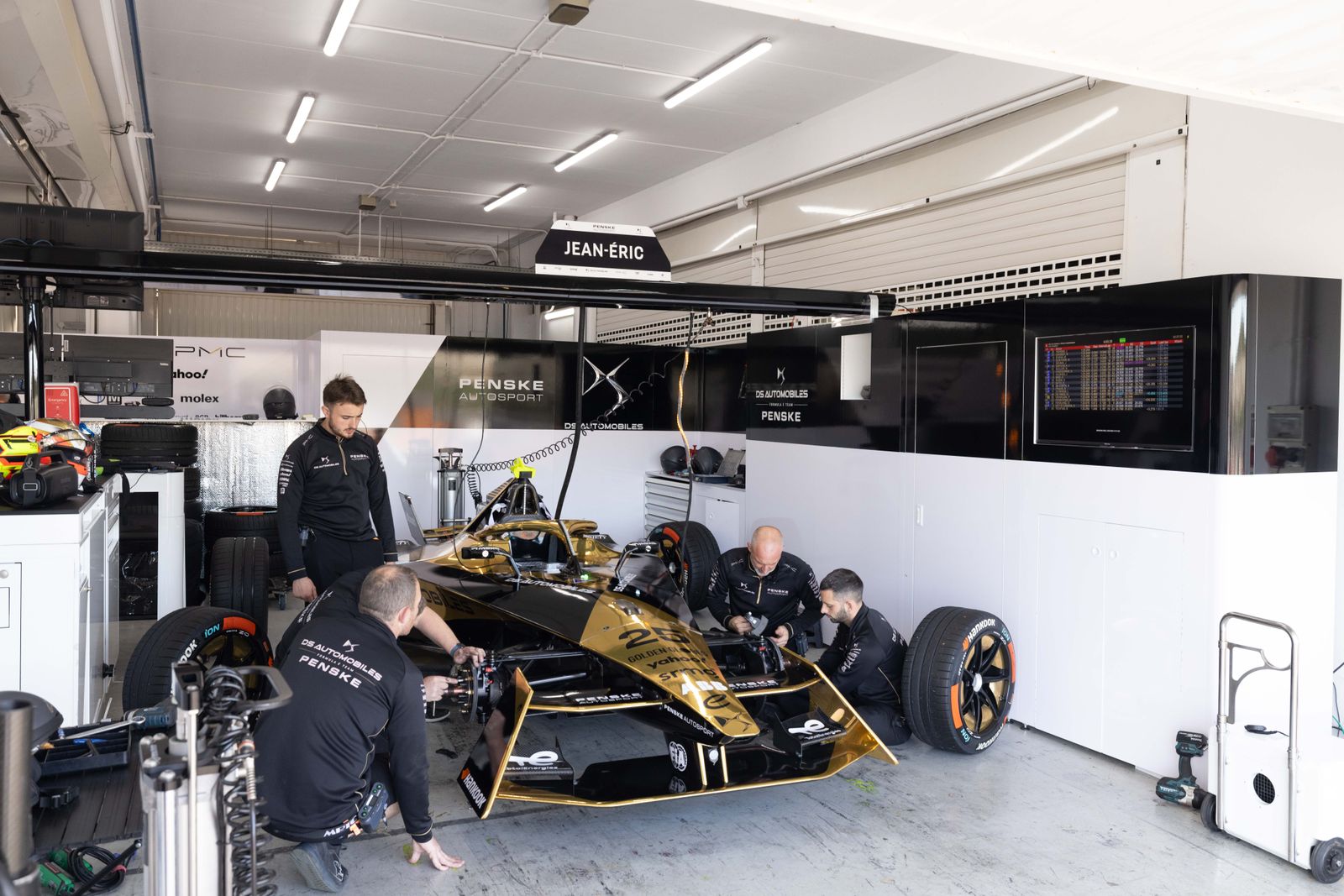A major closed-doors test last week began the groundwork for the next iteration of the Gen3 Formula E car and a goal of making that updated version at least three seconds per lap quicker than the current spec.
New rubber provided by Gen3 spec supplier Hankook was run in conjunction with switching the front powertrain kit (FPK) to an ‘in-drive’ active mode.
Those elements were said to have made the cars much more impressive to drive during a test deemed a success by those involved.
All the registered manufacturers bar NIO 333 attended the test held last Thursday at the Mallorca circuit.
It is understood that the new tyre supplied by Hankook was not the same as used on the Gen Beta indoor speed record car that was used ahead of the London E-Prix in July.

This new product has been earmarked for the 11th season of Formula E, which is expected to kick-off at the end of 2024 as the series aims to get back to its old structure of championship seasons spanning two calendar years after January starts for its 2021-24 campaigns.
The 2024/25 championship will be the start of the second homologation cycle for Gen3 and will involve several modifications to the present car.
As well as fresh tyres and the possibility of an active FPK, the car is set to look different with a bodywork update kit close to a final design.
Some of the drivers present at the test commented to The Race that there was a step up in performance but the majority of the extra pace appeared to come from the in-drive FPK function rather than any noticeable performance advantage from the new rubber.
Speaking to The Race last week, Andretti FE team boss Roger Griffiths suggested that the test would leave Formula E with some decision making to do.

"Do we go for a tyre that can generate a lap time improvement, but it's a really sharp peak, and then there's a huge fall off?" he asked.
“I think that they're looking at consistency, as well as just the peak lap time.
“There are some upgrades to come in on that and then it's going to be likely a different visual identity on the car. But we haven't seen those parts yet.
"So I think that's going to be more of an aesthetic thing than perhaps a performance differentiator.
“The FPK is going to be something that could bring a decent step forward in performance.
“I think this is sort of an interim stage and potentially an indication of how much gain we could see from the next step with the Gen4 car.
“It is encouraging that they're out there reasonably early testing these things, as it does give people the opportunity to address anything else that we may find that comes as perhaps an unintended consequence of these performance upgrades.”
Jaguar (Mitch Evans), DS (Jean-Eric Vergne, Jehan Daruvala and Stoffel Vandoorne), Nissan (Oliver Rowland, Sacha Fenestraz and Jake Hughes), Mahindra (Nyck de Vries, Nico Mueller, Lucas di Grassi and Jordan King) and Porsche (Antonio Felix da Costa and Pascal Wehrlein) logged approximately 200 laps per manufacturer car at the test, which also featured regular 2023/24 spec tyre running last Tuesday and Saturday as well.
The testing also included two full race simulations which integrated use of the new fast-charging boosters supplied by the WAE company.
The FIA and Formula E are yet to announce details on when the new fast-charging pitstop equipment might be used in the forthcoming season, although the Diriyah double-header at the end of January is currently thought to be the favoured choice for its debut.
The RESS units, also supplied by WAE, that will be used for the forthcoming season are currently undergoing contactor upgrades before travelling over to Mexico City for the season-opener.
Those upgrades are a response to the investigation conducted by WAE after the pit fire at Valencia testing last month.






